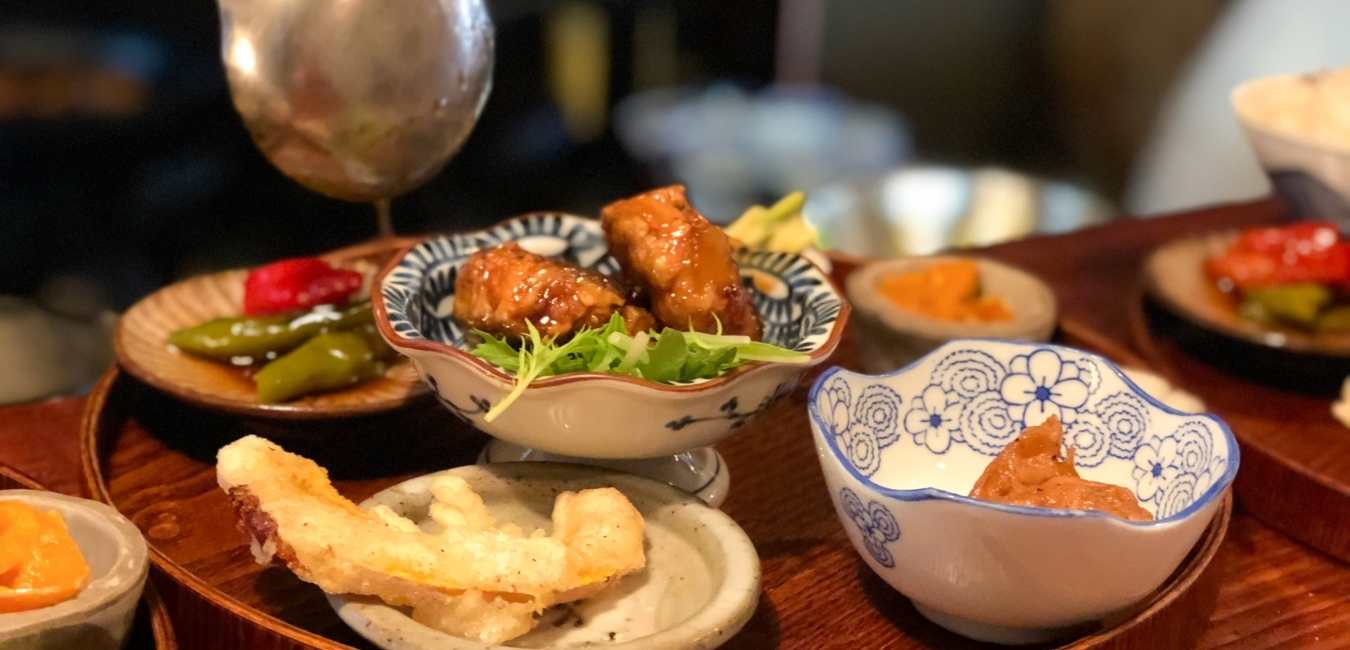Kumo Izakaya & Sake Bar

An izakaya can be more than a bar or restaurant. It is a place where drinking and eating are equal. It’s more than that: an izakaya is a place where you can relax, have fun and forget about your worries. Izakayas were originally established as local dining places where people could go after work for a few drinks and then stay an hour or more. Izakayas in Japan are well-known for their “homeliness” – everyone knows your name, and you’re welcome to join the party with friends or alone.
Izakayas offer a wide variety of small and large dishes that can be ordered as the evening unfolds. There are many options for food, including sashimi, deep-fried, meat, and vegetarian. You can have some of all of them, or just one. Izakayas offer the perfect combination of food and bar.
Jack has more than 14 years of experience as a chef. He has been exposed to many cuisines, including Asian (Japanese Thai, Korean), Western (Australian French, Italian, Mediterranean) and Western (French, Italian, Italian, Mediterranean). This has allowed him to become a skilled, versatile, and knowledgeable chef.
He gained a deep appreciation of Japanese cuisine from eight years spent at Australia’s first Japanese Teppanyaki Restaurant. He loves to show his skills as a chef, preparing, handling, and cooking with various ingredients to create amazing dishes. He loves to cook and create new flavours and menus for his customers.
Sake Bar and Kumo Izakaya stand proudly at the corner O’Connor and Lygon streets in Brunswick East. This building is a landmark in the area. It was built in 1956. Bricks marked with Olympic rings are in commemoration of the Melbourne Olympics. They had to first use it as a bank. It took them two days just to get through the vault to create their sake store.
Richie Built Designer builders transformed this bank into Kumo Izakaya. They worked with Victor Isobe, an architect from Zen Design, which is well-known in Melbourne for Yu-U and Heirloom as well as Tempura Hajime.
Kumo’s design has been carefully considered. The historic building’s beautiful bones, which are a reflection of the Japanese nature of its natural materials (stones, wood, concrete and steel), can be seen on one side. Its modernist proportions are simple and reveal the harmony between Art Deco and industrial Japanese design.
The design evolved from Japanese art. They were influenced by the influence of ukiyoe woodblock prints on modernist architects, most notably Frank Lloyd Wright. Art Nouveau was born from the woodblock prints that arrived in Europe in late 1880s. This new aesthetic focuses on flowing, natural and botanically-inspired shapes, and simple 2D geometry. They were inspired by Japanese designs and saw that they could be copied in Art Nouveau. Art Deco was an extension of Art Nouveau which simplified the process and became more industrial-oriented.
Many of the original 1956 decor items have been repurposed. There is also a lot of recycled Victorian Ash or Tassie Oak. The eight-metre communal table seats 26 and the bar that spans 15 metres holds 18. Bar stools and chairs that are 1930s-inspired will also be found, including custom-made bar stools and barstools with iron frames and leather seats. Hand-painted lamp shades that resemble those in the State Library Reading Room have been sourced with special care. They create pools of light that invite intimate conversations. Kumo is proud to have many details handcrafted by local artisans and craftspeople.
There’s something for everyone, whether you’re at the bar or the communal table, or in a booth.
If you are looking to visit Kumo Izakaya & Sake Bar, you can visit Car Towing Melbourne as well because we are located in the same area. Check below maps to find directions.
Your Local Tow Truck Service in Melbourne Northern Suburbs
Go to : Merri Creek Primary School
